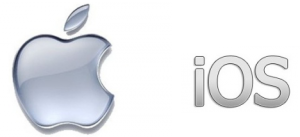Facebook evolves in several markets:
The Smartphones/Mobile OS Market
The social networks Market

- Principal function: micro blogging. Share thoughts of 140 characters maximum
- Secondary function: direct messaging
- Template: different templates are proposed to the user. These templates are customizable.
- Nevertheless a structure modification is not allowed.
- Language: English and Japanese
- Privacy: Possibility to make a tweet visible only for the followers.
- Premium content: No
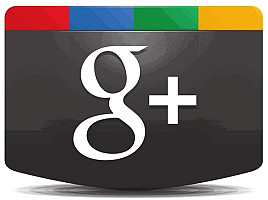
- Principal function: Share and comment links and articles
- Secondary function: Creation of circle (group of contacts), Hangouts (collective and spontaneous video chat in which up to 10 persons can
- communicate), Sparks.
- Template: Fixed

- Principal function: creation of a personal page online public and private ("resume" format)
- Secondary function: Find professionals and expertise, expert consulti. ng, direct messaging, group creating (University, Alumni,… ), statistics, carrier opportunity.
- Template: Fixed
- Language: French, English, German, Spanish
- Privacy: Very accurate control of the privacy parameters
- Premium content: Publishing offer of employment, targeted survey

- Principal function: Share and watch videos
- Secondary function: Comment videos, create playlists, subscribe to channel
- Template: Fixed
- Language: International
- Privacy: Possibility for the user to keep all his subscriptions private and to allow only his contacts to send him messages and share videos.
- Premium content: Partnerships to earn money by views. Recently, paying TV shows and movies available.
The Smartphones/Mobile OS Market
To date, Facebook must face the competition of four major companies : Apple, Google, Microsoft and Amazon. Indeed, those four competitors share something in common that lacks to Facebook : they all have their own device, operating system and related environment.
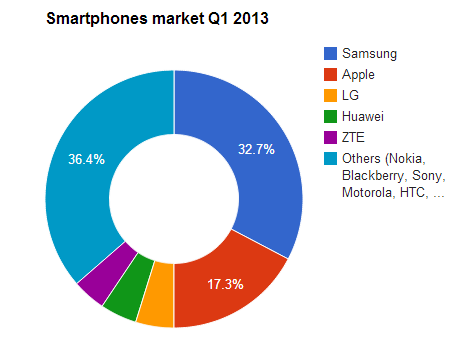
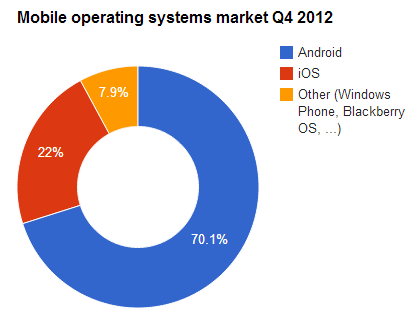
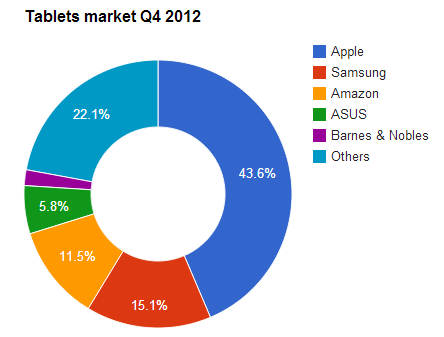
Google : Android, a Linux-based operating system designed for touchscreen mobile devices, was bought by Google in 2005 and unveiled in 2007. Android is open source, and thus can be freely modified by devices manufacturers or developpers. This is both part of its success, and one of its greatest weaknesses. It is part of the success because it made it really easy for anyone to launch a smartphone running a quality operating system, that led to a widespread diffusion (it has been described by technology website Ars Technica as "practically the default operating system for launching new hardware" for companies without their own mobile platforms). On the other hand, every distributor being able to customize Android, an uncountable amount of versions soon appeared, making a large amount of apps less and less compatible. Nevertheless, Google has recently been trying to harmonize the whole ecosystem by reducing the amount of versions distributed.
Android's app store is Google Play, where more than 700.000 apps can be downloaded, the estimated total amount of apps downloaded being 25 billion.
With more than 750 million of devices activated (1.5 million per day), Android shares 75% of the smartphone market worldwide (third quarter 2012).
Since 2010, Google has also released a serie of « Google devices » labelled as « Nexus » running Android, by concluding partnerships with various manufacturers, such as HTC for the Nexus One, the current being LG.
Advertising platform
- Google AdSense is a program run by Google that allows publishers to serve automatic text, image, video, and rich media adverts that are targeted to site content and audience. These adverts are administered, sorted, and maintained by Google, and they can generate revenue on either a per-click or per-impression basis. In Q1 2011, Google earned US $2.43 billion, or 28% of total revenue, through Google AdSense.
- AdMob: The name AdMob is a portmanteau for "advertising on mobile". AdMob offers advertising solutions for many mobile platforms, including Android, iOS, webOS, Flash Lite, Windows Phone 7 and all standard mobile web browsers. AdMob is one of the world's largest mobile advertising platforms and claims to serve more than 40 billion mobile banner and text ads per month across mobile Web sites and handset applications.
Apple : At the opposite of Android stands Apple's iOS running on iPhone, iPod Touch, iPad and iPad Mini. The first iPhone was released in 2007, but the successive generations added a lot of features to the device, such as high-definition video recording, 3G and 4G connectivity and a natural language voice control system (Siri). Its proprietary operating system, iOS, is fully controlled by Apple and was not designed to be customize by any external reseller, neither to run on other smartphones. Its design is poorly customizable and still very similar to its initial version. The App Store, strictly ruled by Apple, contains more than 800.000 apps, free or not, and a total of 45 billions apps downloaded. This is surely part of its succes, as it makes it a really simple yet really complete and powerful device. Indeed, it is possible to find an app for practically everything (except for the device's customisation), without the risk to install any harmful program. All the apps are searchable in a well-organised store with a 1-click buy. However, the main critic is that this « padlocked system » can make you fell like you do not own the device and must submit to the company's rules, tastes, design, ...
It is, nonetheless, a huge commercial success, as more than 250 millions iPhone have been sold over the past 6 years, sharing slightly over 20% of smartphone's market.
Concerning the iPad, its release in 2010 has led to the increasing sales in tablets known today. It is very close to the iPhone, except it cannot make calls over the GSM network, and has a bigger screen. Its purpose is thus to be more of a « consumption » device, with uses like web-browsing, watch movies, and still a bit of office work due to its larger virtual keyboard.
Advertising platform
iAd is a mobile advertising platform developed by Apple for its iPhone, iPod Touch, and iPad line of mobile devices allowing third-party developers to directly embed advertisements into their applications. Similar to AdMob, iAd facilitates integrating advertisements into applications sold on the iOS App Store. If the user taps on an iAd banner, a full-screen advertisement appears within the application, unlike other ads that send the user into theSafari web browser. Ads are promised to be more interactive than on other advertising services, and users will able to close them at any time, returning to where they left their app.The amount paid to developers is 70%. iAd is expected to benefit free applications as well.
Microsoft : First announced in february 2010 and released in november 2010, Windows Phone is a mobile operating system developped by Microsoft. Unlike its predecessor, Windows Phone is primarily aimed at the consumer market rather than the enterprise market. The latest version, Windows Phone 8, has many components shared with Windows 8, allowing applications to be easily ported between the two platforms. Windows Phone features a user interface codenamed Metro, and was inspired by the user interface in the Zune HD. The home screen is made up of "Live Tiles". Tiles are links to applications, features, functions and individual items (such as contacts, web pages, applications or media items). Users can add, rearrange, or remove tiles. Tiles are dynamic and update in real time – for example, the tile for an email account would display the number of unread messages or a tile could display a live update of the weather.
Several features of Windows Phone are organized into "hubs", which combine local and online content via Windows Phone's integration with popular social networks. For example, the Pictures hub shows photos captured with the device's camera and the user's Facebook photo albums. From the Hub, users can directly comment and 'like' on Facebook updates. The other built-in hubs are Xbox Music and Video, Xbox Live Games, Windows Phone Store, and Microsoft Office.
Microsoft has concluded partnerships with both HTC and Nokia, with the Nokia Windows Phone serie « Lumia » holding 59% of Windows Phone's sales in July 2012.
The overall market share increased by 124 % after the release of Windows Phone 8, reaching 3 %, and is now at about 4,7 % of the smartphones market. Concerning the tablets market, Windows 8 tablets share 7,4 % of the market.
The Windows Phone Store is used to digitally purchase music, video content, podcasts, and third party applications. The store is accessible using the Zune Software client or the Windows Phone Store hub on devices. In order to get an application to appear in the Windows Phone Store, the application must be submitted to Microsoft for approval. There are about 135.000 apps available on the Windows Phone store.
Advertising platform
Microsoft has also launched an advertising platform for the Windows Phone platform. Microsoft said that Windows Phone will be an "ad-serving machine", pushing advertising and brand-related content to the user. The platform will feature advertising tiles near applications and toast notifications, which will bring updating advertising notifications. Microsoft said that Windows Phone will be able to "preserve the brand experience by going directly from the web site right to the application", and that Windows Phone "enables advertisers to connect with consumers over time". "You're now able to push information as an advertiser, and stay in touch with your customer. It's a dynamic relationship that is created and provides for an ongoing dialog with the consumer."
Amazon : Released in November 2011, the Kindle Fire is Amazon's mini tablet computer, running a forked version of Google's Android operating system. It is almost exclusively designed for media consumption, as it includes access to the Amazon Appstore, streaming movies and TV shows, and Kindle's e-books. Amazon has, moreover, decided to sell the device at lost and make money on the selling of digital contents. The latest Kindle Fire, Kindle Fire HD, introduces user p^rofiles for sharing among family members.
Amazon has also a slightly cheaper offer, displaying ads on the lock screen and screen saver. These can be removed by paying 15$ anytime.
The Kindle Fire shares 33% of Android tablets market worldwide, and 56% in the US. Concerning the whole tablet market, Amazon shared 11.5% of the market during the fourth quarter of 2012.
Advertising platform
The Amazon Mobile Ads API is an in-app display advertising API, which offers distribution at scale through Amazon and other Android platforms.
The Amazon Mobile Ads API serves ads to U.S. users and works with mobile apps on Kindle Fire, Kindle Fire HD, and Android phones and tablets. Apps that use the Amazon Mobile Ads API may be distributed through any Android platform as long as they are distributed through the Amazon Mobile App Distribution Program.



